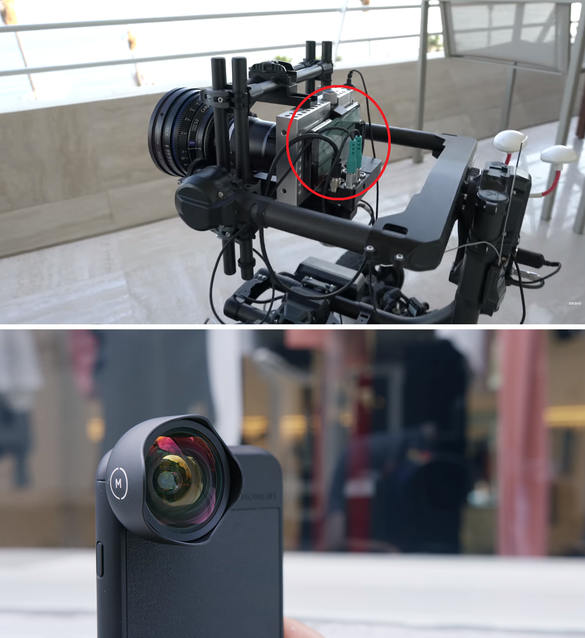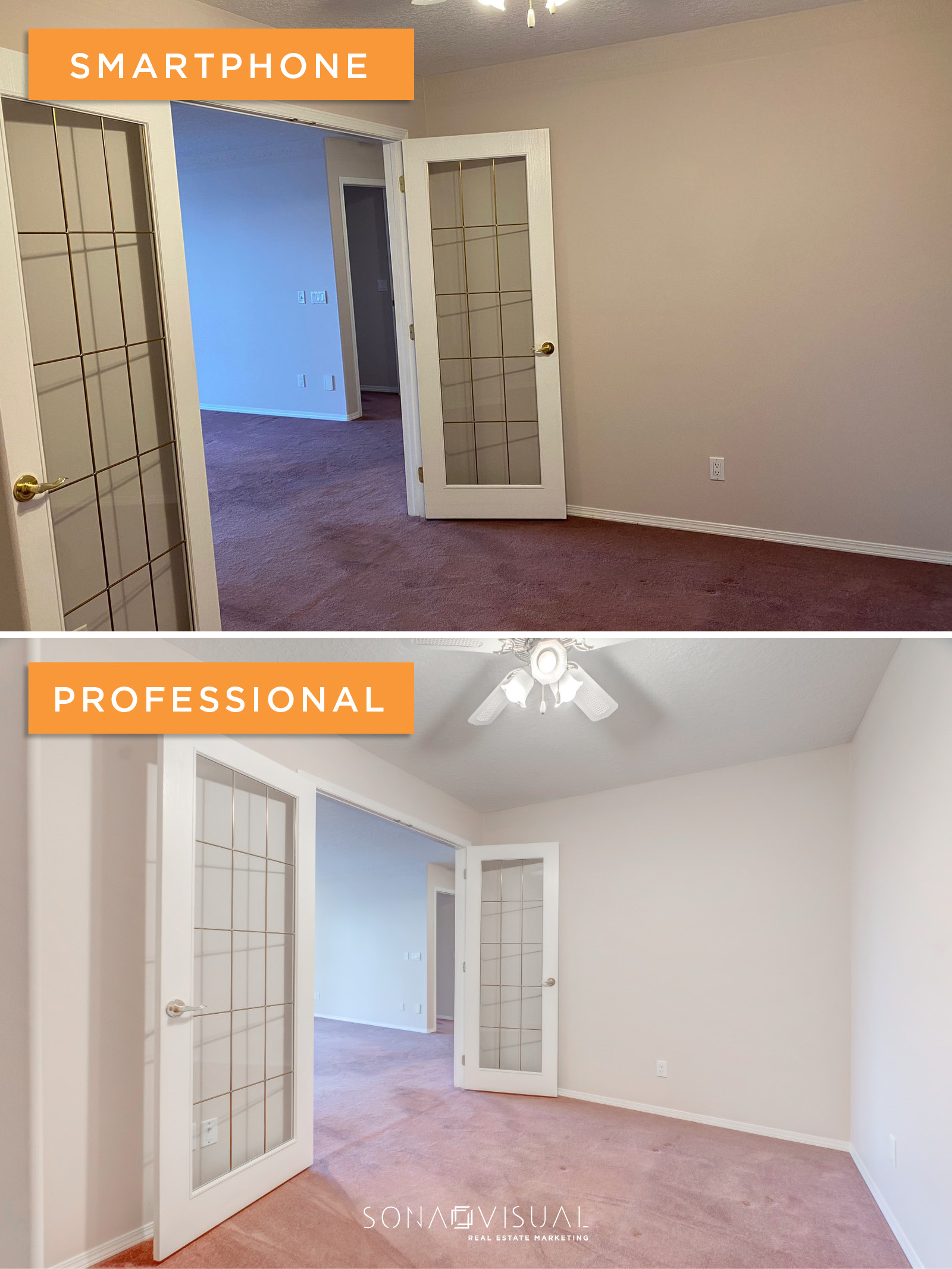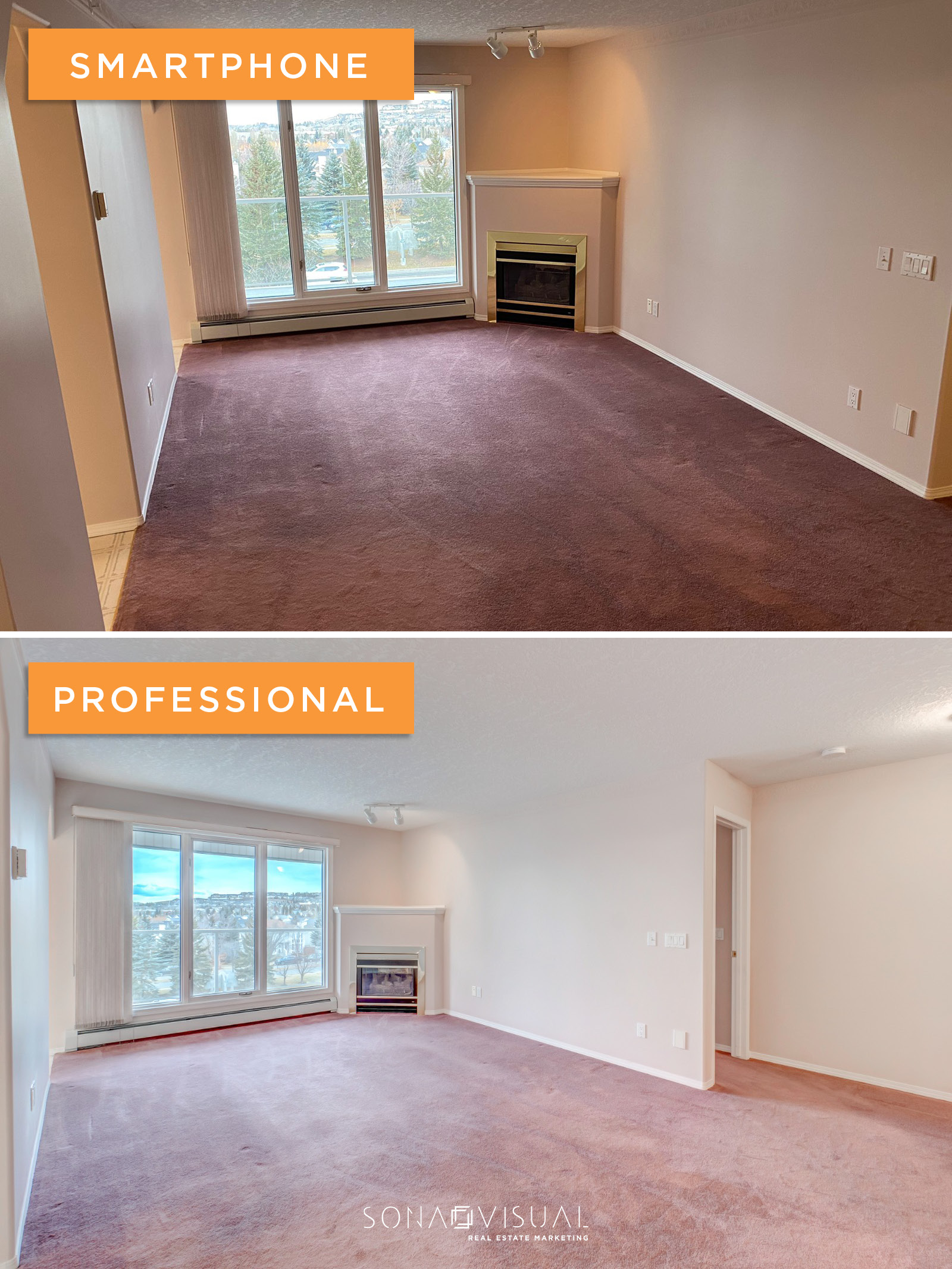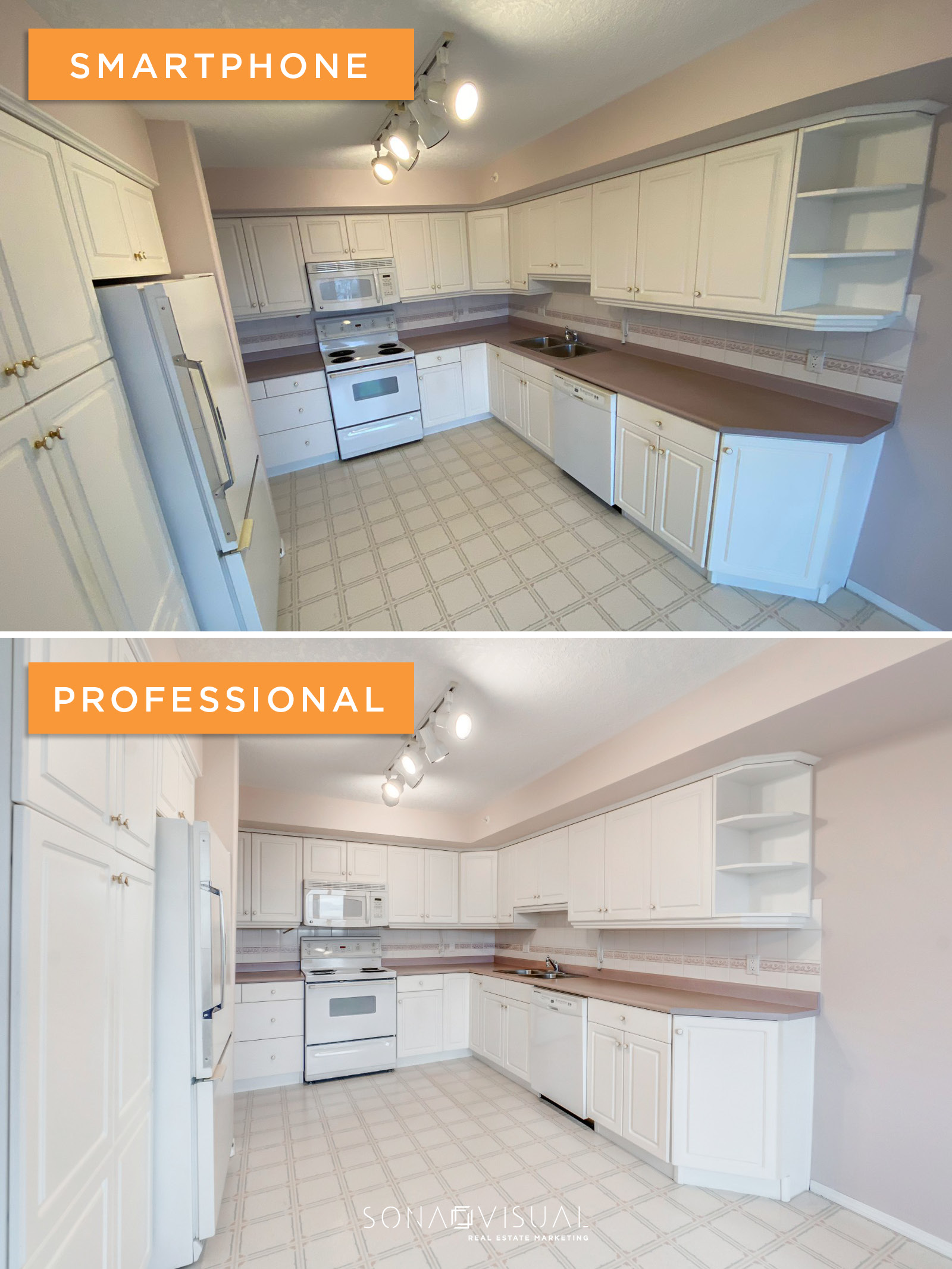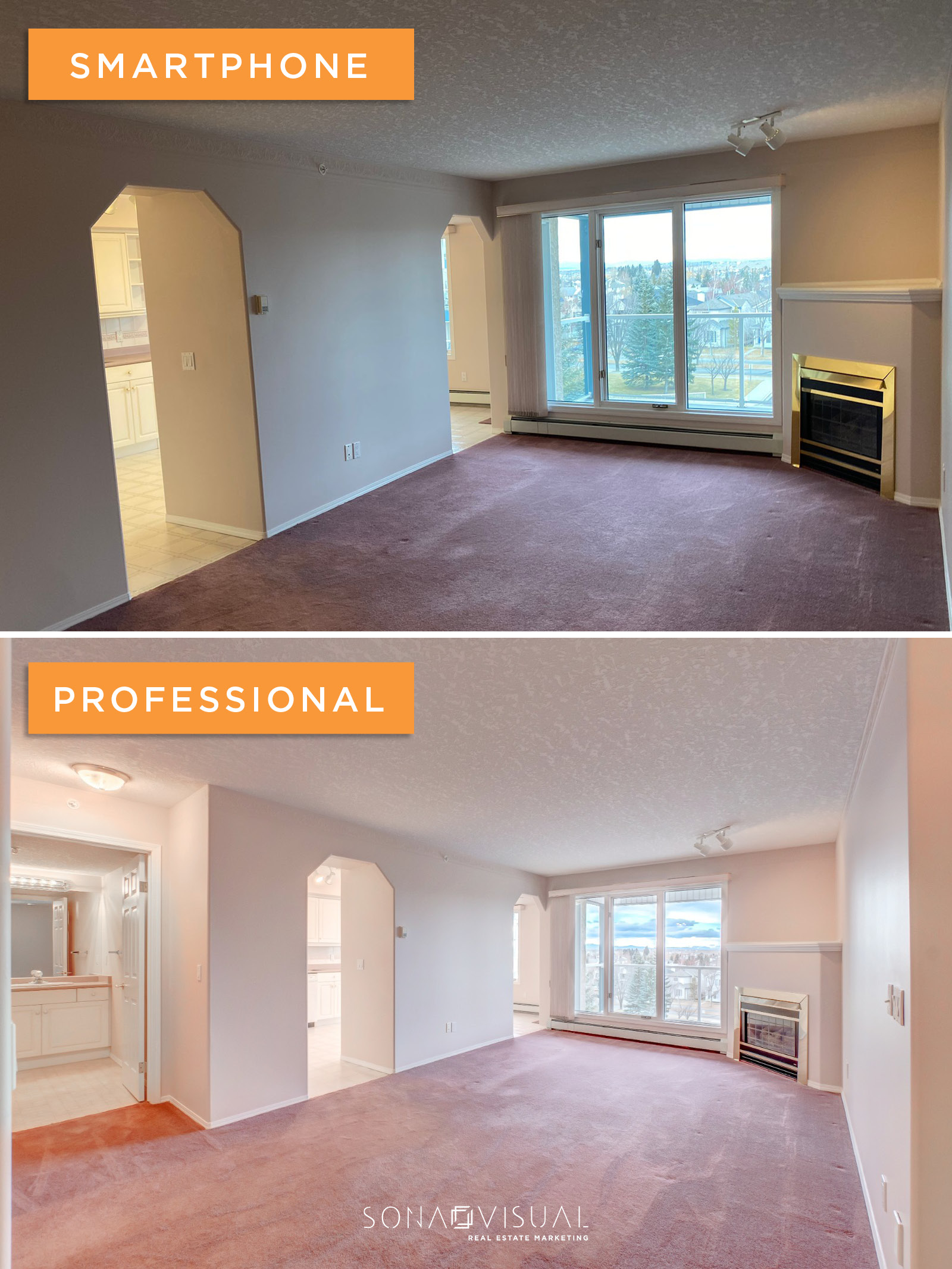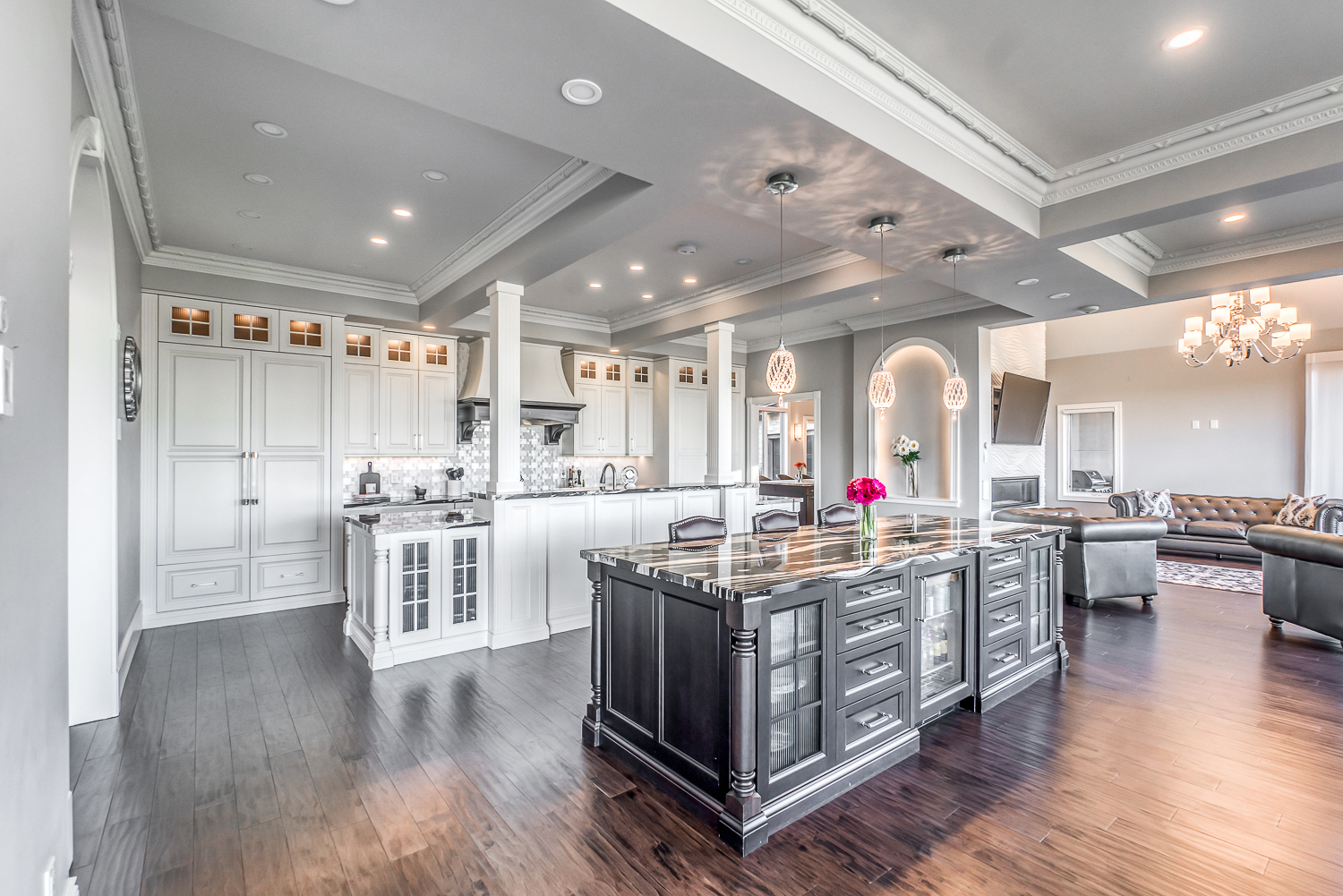
22 Dec Smartphone vs Professional HDR Photography for Real Estate
Real estate photography technology is advancing at neck-breaking speeds, especially in the development of new smartphones. But even the best camera-phones on the market are still far from ideal for many situations a professional encounters. Although companies like Apple are working hard on developing new technologies, this state of affairs is likely to last for the foreseeable future. If you perform a quick Google search of the behind-the-scenes setups on the “Shot on iPhone” ads, you’ll understand what we mean. We’ve provided a quick preview below.
In today’s world, it’s wise to invest in professional photography to serve as the foundation of your property marketing. Professional photographers, realtors, and even clients with a discerning eye can easily distinguish a professional photograph from a phone one. To illustrate this difference, we’re providing you with an outline of key differences between professional HDR photos vs. smartphone photos and visual examples. Read on below!
1. Lenses and Accessories
Professional photography gear allows you to swap various lenses to achieve the exact composition you require. Real estate properties require different lenses. A true professional knows that it’s best to use a lens that will capture the subject matter in a way that will entice prospective buyers to visit the property. Smartphones have limited lens options since they are clip-ons. Most images taken on smartphones utilize the built-in camera. Additionally, phones are not equipped to accommodate essential accessories professionals use daily, such as tripods and filters. Anyone who has tried to take phone pictures in poor light knows that results are often lacklustre.
2. Professional Editing Capabilities
Professional cameras capture images in larger files sizes. Larger file sizes are far more convenient for the editing process since there are more pixels per square inch. Trying to edit a smartphone photograph in professional editing software often results in a disastrous final product that lacks clarity. Professional photographers have the tools and knowledge to shoot in RAW format, which means that an image is full of information regarding the scene’s colours and tones. This information makes it much easier for a media professional to make final touches to the photograph without reducing its quality.
3. High Resolution Print Quality Available
The majority of the real estate business can be conducted digitally – and thank goodness for that! Meetings can be held through Zoom, contracts can be sent via email, and homes can be toured from anywhere with the power of 3D virtual tours. That being said, there’s something very real and tangible about print brochures and feature sheets. When prospective buyers visit a property, it’s always a good idea to leave them with something they can hold on to that outlines the special features of a home, which require professionally shot photographs that translate well on print material. Unfortunately, phone images lack the resolution to display well on print, unless you’re fine with pixelated, blurry images.
4. Colour and Tone Accuracy
Have you ever taken a photo with your smartphone and thought the colors looked nothing like those in front of you? Maybe it was way too orange or a bit too blue. Professional photographers understand that lighting sources can vary. Even “white” light sources can be warmer or cooler depending on the material. This variation is referred to as the “temperature” of lighting.
In the Smartphone example below, you can see that the kitchen cabinets look yellowish and dingy, thanks to the surrounding warm light source in the kitchen, even though the cabinets are actually bright and white. Post-processing software, white balancing tools, and professional camera gear allow for the correction of temperatures in real estate photos. Hence, the final images will look more like the Professional example below. No matter what light sources are available within a property, your professional property photographer should be able to display the accurate colour of cabinets, floors, and walls of a space.
5. Exposure Issues
“Crushed shadows” and “blown highlights” are both common exposure problems in real estate photography. They’re two sides of the same coin. When you crush your shadows, you underexpose your image. This means there will be large areas of pure black in your image. Similarly, when you have blown-out highlights, your image becomes overexposed. You will see large areas of white in the image. In either case, you’re losing valuable detail, like street views from windows or property features in darker basements.
Unfortunately, you cannot recover these details in post-production so the camera gear itself is key here. When you shoot with a smartphone camera, there are limited exposure settings you can use to prevent exposure issues in the final image. In professional cameras, there are many more settings available. Photographers can use settings like histograms, highlight alerts, filters, and metering to capture the optimal amount of detail.
6. Lines and Composition
As you can see in the numerous examples provided in this article, lines and composition make a huge difference in presenting a property. Real estate images should accurately display a property, while making a space feel expansive. The vertical lines in a space should be just that – vertical. When scanning a photo our eyes move from left to right, rather than up and down. That’s why vertical lines work to lead a viewer’s eyes upwards, making a space feel taller. When we think of growth, we think of an upwards direction. Using vertical lines to lead the eye upwards emphasizes growth and expansiveness.
Similarly, a property photograph should feel horizontally expansive, too. Use wide-angle lenses to capture an extra wall or even more features like doorways (as in the example above). These photos allow buyers to see a room in its entirety. These lenses also present a space more accurately, because that’s what our human eyes would see when in the space.
Experience the Sona Standard
Need professional real estate images that will shine on the MLS? Look no further! Our team of professional photographers in Calgary and Edmonton deliver magazine-quality images at lightning-fast turnaround times. You deliver the Gold Standard in every other area of your business – why not your marketing? Get in touch with our team by email at [email protected] or by phone at (403) 980-9395 to book your property photography shoot.
P.S. – Don’t forget to connect with us on social media. Every day we post samples of our professional photography work! Plus, you’ll see luxury properties on the market, marketing tips and tricks, and yes, even the occasional meme. Follow us on Instagram and YouTube!


